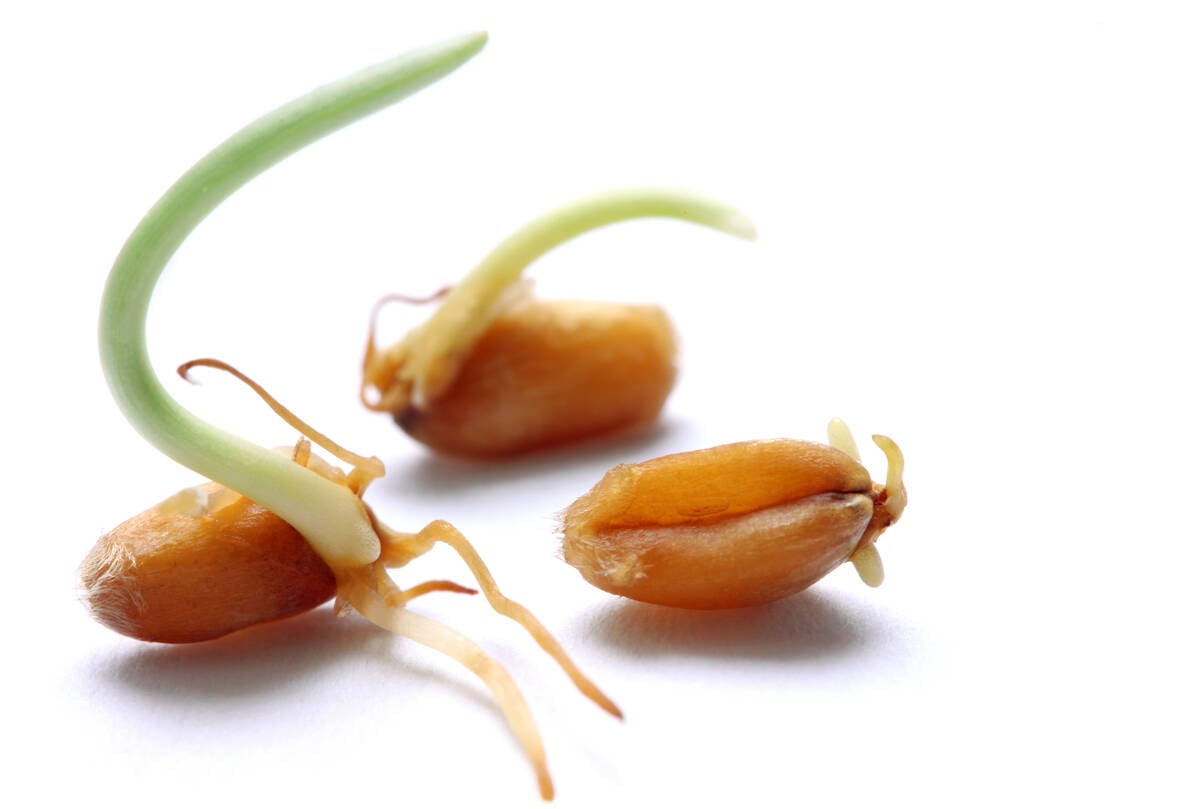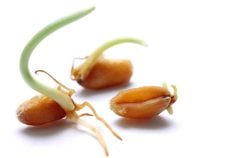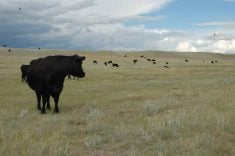The benefits of manure have been known as long as humans have tilled the soil.
Spreading manure adds organic material, improves soil structure and returns nutrients to the earth. On modern farms, manure application has become a science where a little of a good thing can go a long way.
Excessive applications of manure can cause nutrient overloading in soil where runoff of nitrogen and phosphorus compounds, as well as pathogenic microorganisms might cause ground and surface water contamination.
To prevent problems from developing, best manure management practices have been drawn up across Western Canada where producers are reminded to consider:
Read Also

Manitoba farmers fight sprouted wheat after rain
Rain in mid-September has led to wheat sprouting problems in some Manitoba farm fields.
• climatic zone of the farm;
• type and number of animals in confinement;
• total amount of manure produced;
• how the manure is handled, stored and applied;
• amount of land available to apply manure;
• soil types on the farm;
• types of crops grown and crop yield potential.
Manure’s first function is to add more organic material, said Alberta agrologist and researcher Ross McKenzie.
“Most of our prairie soils still need organic matter, which declined significantly with cultivation in the first 50 years where they first broke the land,” he said.
“The quality of our soils was really declining for years, but now we are back on an upswing with reduced tillage.”
Nevertheless, manure needs to be used wisely so regular soil testing is recommended.
McKenzie estimates 20 percent of irrigated farmers test their soil on a regular basis and about 10 percent of dryland producers.
He recommended taking 20 random sampling sites across each field to make up a composite soil sample for each depth.
Ideally, each field should be analyzed every year, either in late fall or early spring to identify which nutrients are deficient in each field.
Samples in a field should be collected to a depth of at least two feet and samples taken at zero to six, six to 12 and 12 to 24 inches. Samples are analyzed at each depth for nitrate-nitrogen, phosphorus, potassium, sulfate-sulfur, pH and electrical conductivity (salt).
Every few years, additional tests should include soil sampling to a depth of four feet to ensure nutrients are not leaching.
Soil lab results provide information on available nutrients that can be readily absorbed by growing plants. Total nutrient refers to an element in the soil or manure in both plant available and unavailable forms.
Farmers should use laboratories in their own provinces because the tests are calibrated for local conditions.
Also, laboratories may provide different results and offer a basic package of measures for nitrogen, phosphorus, potassium, sulfur and soil pH, but if farmers want soil organic matter or micronutrients, they have to ask for it.
Armed with this information, growers can better determine manure application rates, available nutrients and the portion of the unavailable nutrients that will be released from manure in the year of application. These compounds must be matched to crop nutrient requirements in each field.
As a general rule, most of our cultivated soils do need some nitrogen fertilizer to optimize crop yield,” McKenzie said.
“Nitrogen is the most deficient nutrient across the Prairies and phosphorus is the second most limiting nutrient.”
Soil tests over the years show about 80 percent of Alberta’s cultivated soils are deficient in phosphorus.
“It is still a nutrient we need to use and as long as we use it wisely, it really is not an issue,” he said.
However, overloading of phosphorus from manure application can be a regional problem where large concentrations of intensive livestock operations are found.
Achieving a balance is difficult because the nutrient content of manure is highly variable and it is impossible to apply manure to meet exact crop requirements for all nutrients.
When manure is applied based on one nutrient, other nutrients will be over or under applied.
This is particularly the case with nitrogen and phosphorus. These are found at varying levels in different types of manure. Further, these two nutrients break down and release nutrients at different rates over a period of years.
Plants need phosphorus for storage and transfer of energy. Less than 20 percent of the total phosphorus content of surface soils from zero to six inches is available to plants.
To meet a crop’s nitrogen requirements, phosphorus might be applied at approximately three to six times the rate of crop removal. Repeated applications over a period of years will result in a buildup of high soil phosphorus levels.
For example, applying manure annually for five years of cereal silage to meet nitrogen requirements may have to be followed by four to six years of alfalfa to draw down the phosphorus soil levels.
Another alternative is to apply manure to meet phosphorus crop requirements and supplement with nitrogen fertilizer.
Practices may have to change to draw down the soil phosphorus levels in those regions where overload has occurred.
Manitoba has moved toward a phosphorus standard while Alberta continues to base its recommendations on nitrogen needs.
Manure contains other valuable nutrients like trace elements.
“Most of our soils across the Prairies have adequate levels of micronutrients, but there are areas, particularly in central and north-central Alberta in the sandier soils, that are copper deficient,” said McKenzie.
About one million acres in Alberta are prone to copper deficiency. Adding manure to these areas could help relieve that problem.















